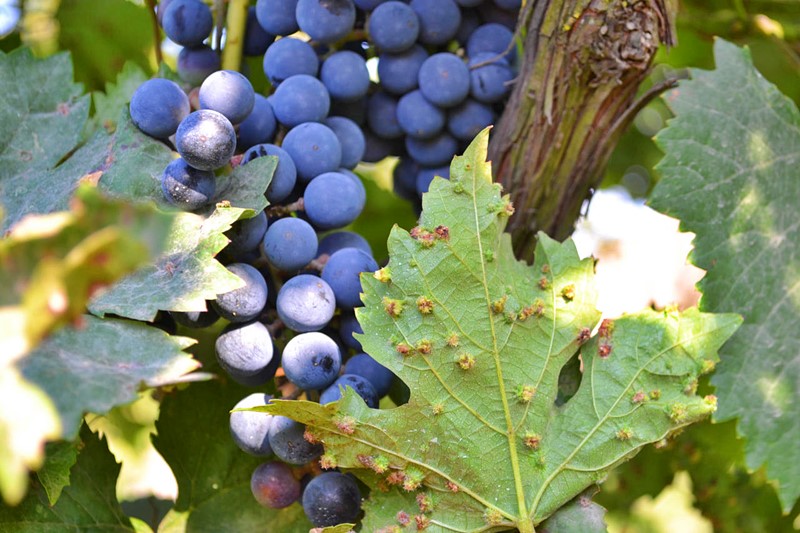Unraveling phylloxera: the pest that changed viticulture forever
From New York to Europe: tracing phylloxera's treacherous journey and genetic identity

The late 19th century saw Europe's viticulture shaken to its core, with the Phylloxera outbreak that decimated vineyards across the continent. Even today, this catastrophic event remains a crucial point of study for botanists, entomologists, and viticulturists. The recent discovery of the Phylloxera genome sequence offers a beacon of hope in the continued struggle against this formidable insect.
The History of the Devastating Pest
Phylloxera, scientifically known as Daktulosphaira vitifoliae, stands out as the most destructive pest ever encountered in the world of viticulture. The extensive damage began in 1863, with France as the initial epicenter. It's estimated that this tiny creature was responsible for annihilating two-thirds of Europe's vineyards. Interestingly, its origin traces back to the United States, from where it made the perilous journey to European shores.
Understanding Phylloxera
This pest, a parasite that feeds on grapevines, is a minuscule insect closely related to aphids and exhibits significant polymorphism. The two known forms of Phylloxera are:
- Parthenogenetic Form: These are female insects that can reproduce without the need to mate with a male. They invariably produce female offspring. Measuring between 0.3 and 1.4 mm, these yellow creatures come in two types - the gallicolas, which live on the leaves, and the radicicolas, which dwell on the roots.
- Sexual Form: These Phylloxera do not feed due to their lack of mouthparts.
Vineyards have never been the same since this colossal outbreak. Understandably, the drive to not only control but also counteract this insect is a significant focus of ongoing research.

Genomic Breakthrough
In an extensive study conducted by the INRAE, the Phylloxera DNA sequence was unveiled, revealing more than 2700 genes—a monumental breakthrough. This discovery, published in the scientific journal BMC Biology on July 23, 2020, sets the stage for devising better strategies to combat the pest, which, in turn, promises to enhance wine production.
Sequencing the DNA of an organism offers insights beyond mere gene identification. It paints a vivid picture of the organism's history, its evolutionary connections, and facilitates the reconstruction of its evolutionary journey. Intriguingly, the study found that the European Phylloxera is genetically identical to those from New York and the Mississippi basin.
The research involved collecting samples from various regions in the US and Europe. It was deduced that the European invasion likely stemmed from the import of Vitis riparia, a wild American grapevine, particularly from areas in Illinois, Wisconsin, and New York. Notably, while Vitis riparia had naturally developed defenses against the pest in its homeland, the grapevines in France were wholly defenseless, leading to the European viticulture disaster.
The Mysterious Gene Family
Of the 2700 genes identified in Phylloxera, over 10% of its genome is constituted by a mysterious "superfamily." It's speculated that these genes regulate interactions between the grapevine and the pest, possibly disabling the grapevine's defense systems through intricate mechanisms. Hence, this "superfamily" could hold the key to transformative breakthroughs in viticulture.
Research spearheaded by Paul Nabity's team from the University of California, Riverside, delves deep into this "superfamily." If some proteins expressed by these genes act as "effectors" that enable the pest's successful attacks, it might lead to identifying grapevine varieties that are tolerant or even resistant.
Future Strategies
To safeguard vineyards, potential strategies might involve identifying molecules, both natural and synthetic, that can neutralize proteins produced by Phylloxera. Such "natural pesticides" could provide an environmentally friendly solution, posing no harm to other insects or the environment.
While research into Phylloxera is in its nascent stages, possessing its "gene catalog" represents a monumental leap—infusing hope into the continued quest to tackle this notorious vineyard pest.
Founded in 2007, Vinetur® is a registered trademark of VGSC S.L. with a long history in the wine industry.
VGSC, S.L. with VAT number B70255591 is a spanish company legally registered in the Commercial Register of the city of Santiago de Compostela, with registration number: Bulletin 181, Reference 356049 in Volume 13, Page 107, Section 6, Sheet 45028, Entry 2.
Email: [email protected]
Headquarters and offices located in Vilagarcia de Arousa, Spain.